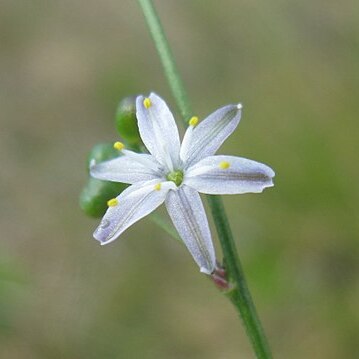A lily which keeps growing from year to year. It is a grass-like herb. It grows 10-25 cm high and spreads 10-25 cm wide. The roots are slightly fleshy. The leaves are grass-like. They are 25 cm long and slender. They occur in tufts. They are less than 5 mm wide. The flower has slender petals 3-10 mm long. They can be white, pink or blue. They are white with bluish-grey veins. The flowers are on leafless stems and are in the axils of bracts. They have white stamens with yellow anthers. After flowering they form a twisted shape.

